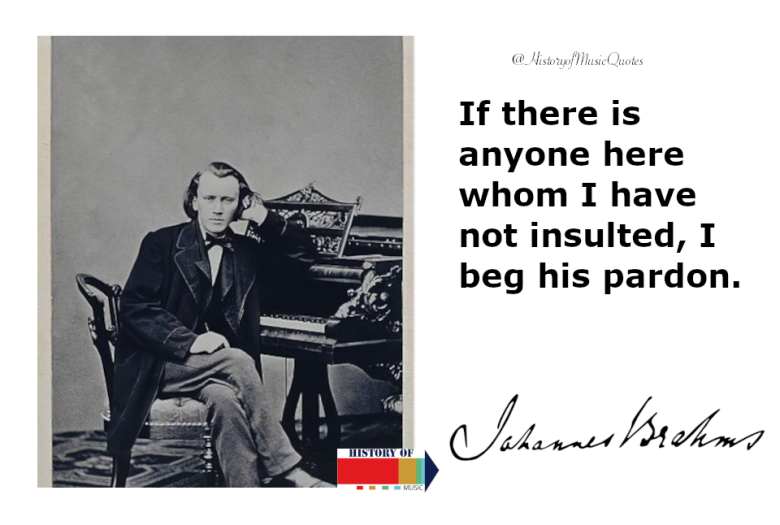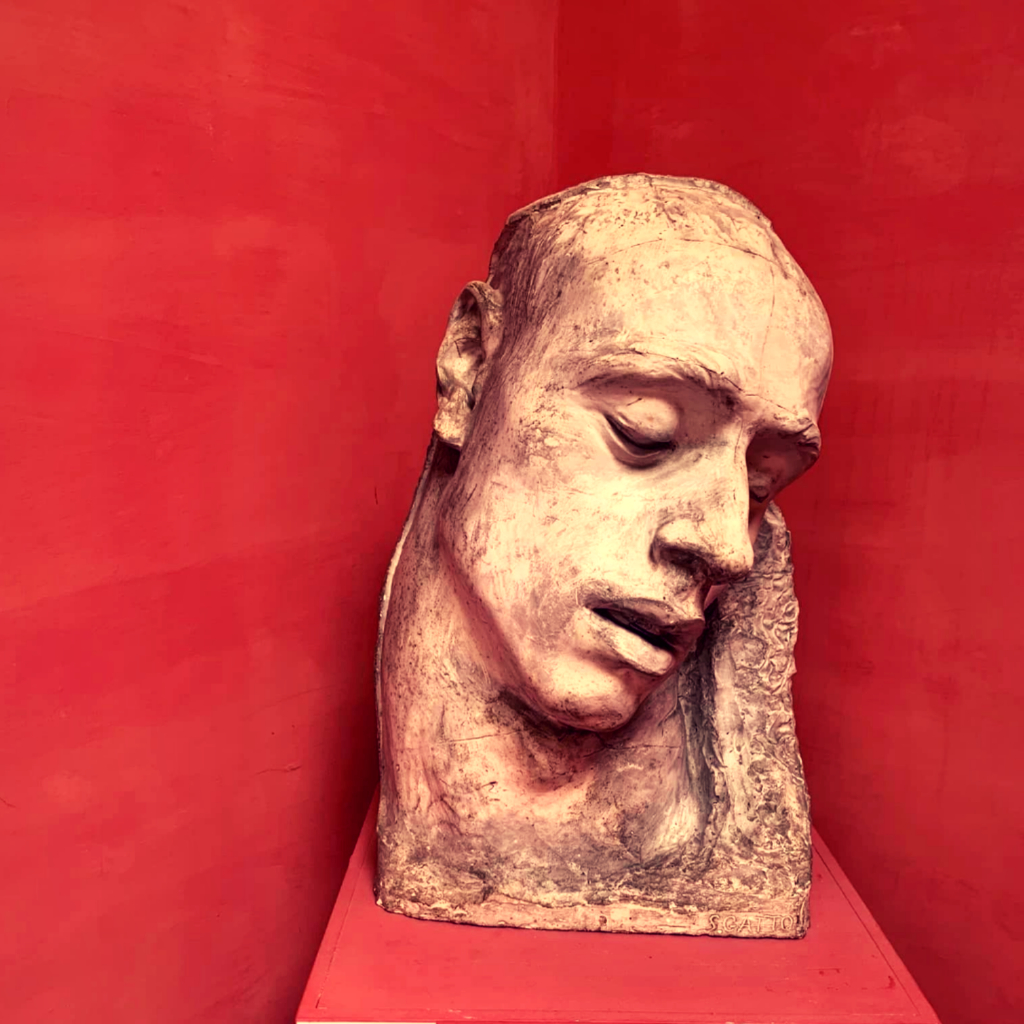
Like all of the composer’s symphonies, the Third was created in Vienna, the city that was the birthplace of this genre. Brahms is well aware of himself as heir to these traditions. He adored Vienna, its inhabitants, enjoyed the musical atmosphere of this city. Indeed, everything is close by: the places where Schubert lived or visited, the cathedral where Haydn sang as a boy, the famous cafe with autographs of all the great composers, the Prater – the park where Beethoven, walking, wrote down sketches of future creations.
Brahms, when he first arrived in Vienna, was almost thirty, fame, honor – everything was ahead, and the city was literally saturated with all kinds of music. Musical communities performed major compositions, and waltzes of both Strausses could be enjoyed in the parks. In the house where Mozart wrote Don Giovanni, and Beethoven improvised for Mozart, lived the pianist J. Epstein, with whom Brahms will perform a lot, and not only in Vienna. From the very beginning of his journey, Brahms feels like a successor of Schumann. Symphony 3, F major, op. 90 was completed in 1883, the year of Wagner’s death, and was first performed by the Vienna Philharmonic on December 2 of the same year under the managing of Hans Richter. The premiere was a great success, despite individual attempts by supporters of the “music of the future” (I mean fans of Wagner, Liszt, Wolf) to boo the new symphony. H. Wolf in his review called the symphony a wormhole from which there is no way out. For all the absurdity of this image, in the symphony, in fact, existential, posing the problem of choosing the Path, some features of the development process paradoxically confirm the opinion of H. Wolf.
In her monograph, K. Geiringer says that the singer Hermine Spies, who sang the soprano part in his Rhapsody for Voice with Orchestra, inspired Brahms to create the Third Symphony. They met in 1882, a year before writing the symphony. Brahms was even going to marry her. Interestingly, the singer called her passion for Brahms “passion for Johannes.” A parallel is involuntarily drawn with Bach’s “Passion for John”. In German, these phrases are spelled the same. Therefore, K. Geiringer sees in this work a sublime lyrical concept associated with the theme of finding love. According to this interpretation, the main part is a meeting, the side part is a joint pastime, and the religious and philosophical principle, which permeates the entire symphony, is the performance of Hermine’s religious and philosophical works by Brahms.
In the Third Symphony, Brahms returns to the images of fighting. Like the First, this symphony contains many pages of pathetic music. From the very beginning of the cycle, heroic images predominate. The main leitmotif invades the music of other parts like a challenge to fate: just like Beethoven. There is also an allusion to the see-through leitrhythm of Beethoven’s Fifth Symphony – the motive of fate. The music of Andante, like a presentiment of future fights, has a “fierce” character, with which one cannot agree. The “light-sad” mood, so specific to Brahms, dominates in Part II. The denouement of the “frantic battle with fate” has been moved to the final, the center of gravity of the cycle.
The clash and struggle of various themes-images give rise to a kind of interpretation of the structural laws of the sonata allegro – the main part is absent in the reprise. But at the most acute moment of the disaster the storm suddenly subsides. As in part 1, Brahms does not show the end of the struggle, the final outcome of the battle: the storm of passions has died down, light is softly streaming, the courageous and heroic theme from which the symphony began is enlightened. The outcome is unclear, the question remains unanswered.
Works-predecessors of the symphony – Rhapsody to text from Goethe’s “Winter Journey in the Harz” for viola, male choir and orchestra, op. 53, “The Schicksalslied (Song of Destiny), Op. 54 on text by Friedrich Hölderlin for chorus and orchestra; “Triumphal Song” to the text from the 19th chapter of the Revelation of St. John the Theologian for baritone, eight-part choir and orchestra op. 55; “Nänie” (by Friedrich Schiller) for chorus and orchestra, op. 82; the Song of the Parks (after IV Goethe, 1882), op. 89. All these are works of a philosophical plan, posing the problems of life and death. Their main substantive aspect is the bright sadness that all the most beautiful and perfect is mortal, giving birth to a single image in a style close to the composer’s choral motets. The theme of fate, fateful predestination is combined with images of consolation and solemn enlightenment. We find the same question, the same attempt to overcome a gloomy fate, an elegiac shrillness in the Third Symphony.

Shortly before writing the Third Symphony, he finished the vocal cycle “Die schöne Magelone”, where fanfare is the mythologem of the Path. The Third Symphony is a symphony of bright contrasts and nervous outbursts, is distinguished by an interesting property: each of its four parts, as a result of development, leads to tranquility and lyrical completion. This is especially typical for the finale, which is based on a restlessly agitated, but somehow restraining theme, and for the first part with its stormy inspirational and temperamental beginning.
A number of features bring the symphony closer to a kind of philosophical discussion, which is quite natural for such authors as Brahms, Bruckner, Frank, since they are religious and inclined to the transcendent, constantly reflecting on the essence of being and the place of man in the world. Keeping the typically romantic theme – the discord between the artist and society, loneliness, the inaccessibility of the ideal, – Brahms’s Third Symphony translates these themes into a moral and ethical plane, engages the listener in religious and philosophical discussions around antitheses: Man-Space, Faith – Unbelief, Life- Death. There is a symbolic level in the drama of the cycle, represented by a number of symbols: Fate, Death and Eternity, Chaos and Peace, Light and Darkness, which are realized through a number of rhetorical formulas, reliance on different types of chant (Protestant, Gregorian).
Dramatic processes unfold in several interconnected spaces with different course of time. Highly conflicting, impulsive, explosive. Meditative zones have a different character: there is no place for Time-Event, everything is filled with Time-State.
Get here:


